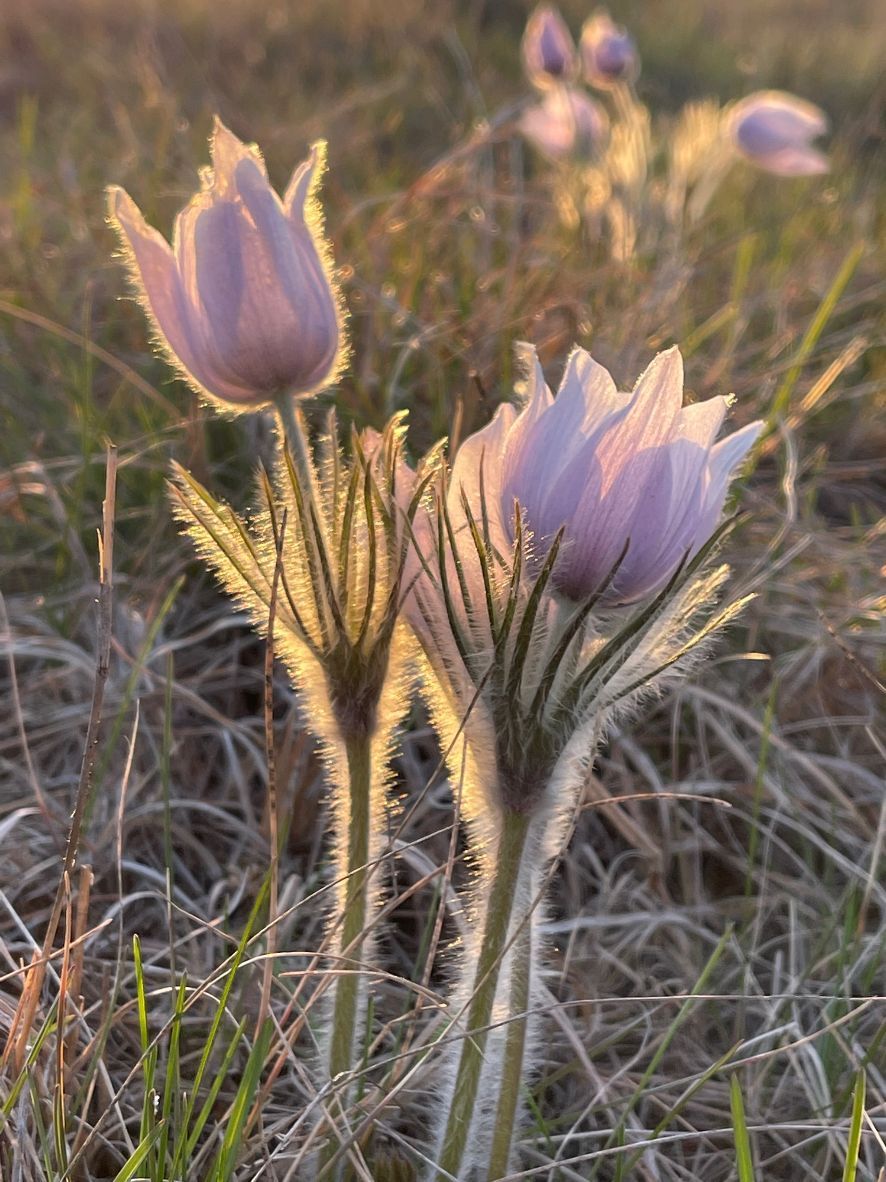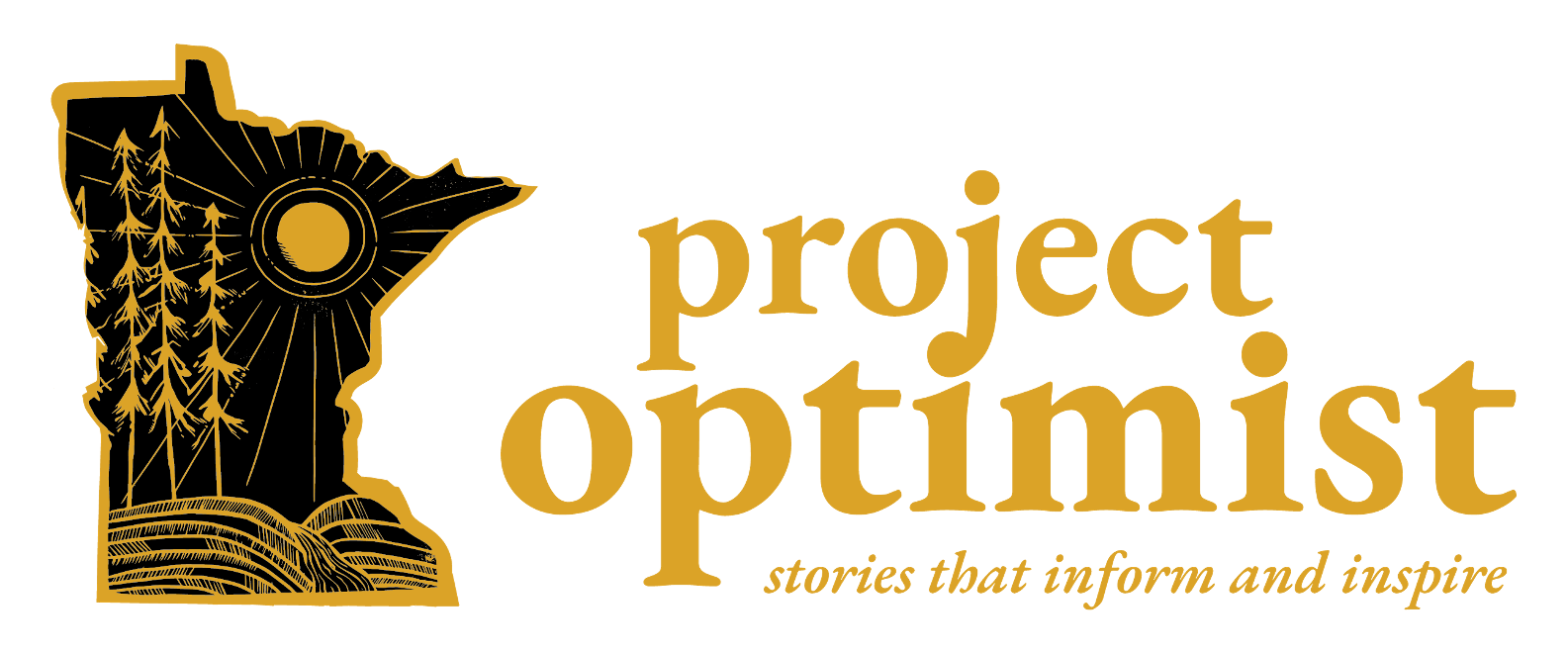Our new nature series launches today: Drawn by Nature!
What to look for and where to look this spring
What to look for and where to look this spring
Drawn by Nature: Birds, early flowers signal spring’s arrival
Watching the sky and walking through woods and prairie reveal fresh sightings of cranes, bluebirds, pasque flowers and marsh marigolds as winter finally lets go.
By Lisa Meyers McClintick for Project Optimist
With blustery April winds whipping across Sand Prairie Wildlife Management Area on St. Cloud’s east side, the land can look empty, still dormant and layered with dried, crunchy grasses. But it’s where I go to search for that elusive first sign of spring: the pasque flower.

Drawing of two pasque flowers blooming by Lisa Meyers McClintick.
The pale purple wildflower emerges with fuzzy stems and fragile blooms as small and plucky as crocus. I spent my childhood among woodland flowers and didn’t know about this prairie plant until a biology professor pointed it out decades ago.
In 2021, with pandemic-fueled cabin fever, a new pup with boundless energy and a yearning for the comfort of nature, I spotted the first pasque flower on my own at Sand Prairie. I was thrilled and took photos, eager to see it return a year later.
My husband and I searched for the flower again in 2022 and left several times with no sign of it. I even tried using my phone’s geotagging to retrace the exact spot on the trails. Was it hidden too well in the grasses, or did it emerge and disappear quickly?
It turns out that neither happened. We just needed patience. Last year’s never-ending winter delayed blooms by a full two weeks.
It finally showed up in the first week of May. Not only did I finally find my one elusive pasque flower, but I sheepishly discovered dozens of the plants to the far right of the parking area — no hike or long search needed.
With a record-breaking snowfall this winter of 2022-2023, our first signs of spring might be delayed yet again if the whiplash flip from blizzard to almost 70 degrees on either side of Easter doesn’t boomerang us from icicles straight to mosquitoes.
Birds can actually be the more reliable harbinger of spring than plants.

Bluebird drawing by Lisa Meyers McClintick.
Cardinals sing loud enough to be heard indoors with windows still shut. Geese honk overhead in wavering Vs. Feathers of trumpeter swans and pelicans flash white against blue sky as they head north to find nesting grounds.
We hear the ancient-sounding karoo of sandhill cranes that return as early as March from wintering in southern states. Close to a million cranes funnel through and pause along southcentral Nebraska’s Platte River for one of the world’s biggest migration spectacles. They rest, refuel and keep flying toward Minnesota and the Upper Midwest or keep going all the way to Siberia.
Longer days cue the birds’ exhaustive journeys north. No one warns them they may find a few feet of snow burying and delaying critical food sources. Last year, normally scarce birds such as scarlet tanagers and indigo buntings showed up at home bird feeders desperate for food. Seeing these vibrant birds offered a colorful silver lining to a winter that wore out its welcome.

Drawing of the wildflower spring beauty by Lisa Meyers McClintick.
How you can help
Fill a feeder or two for the new arrivals, including songbirds, that are coming in waves through May and in need of sustenance. They’ll welcome the act of kindness in a spring that’s been later, colder and harsher than usual.
Take a hike
State parks, such as Lake Maria, Sibley or Lindbergh, usually have staff who can point you to spots where unique birds have been seen or wildflowers have emerged. Hardwood forests offer the most prolific early spring displays before trees fully leaf out and block the sun.
While it’s tricky to pinpoint exactly when we’ll see the emergence of ephemerals, mid- to late-April through late May are safe bets for finding woodland flowers.
County parks such as Quarry Park and Nature Preserve in Waite Park and St. John’s Abbey Arboretum in Collegeville have trails through these three habitats.

Drawing of marsh marigolds by Lisa Meyers McClintick.
Early spring wildflowers
Prairie: Pasque flower
Woodland: Bloodroot, rue anemone, violets, wild ginger, spring beauty, trillium, bluebells, wild geranium, Dutchman’s breeches.
Wetlands: Marsh marigold
Who's behind this column?
St. Cloud-based Lisa Meyers McClintick has been an award-winning journalist and photographer for more than 30 years. A lifelong nature nerd, she joined the Minnesota Master Naturalist program in 2021.

Drawing of a purple rue anemone by Lisa Meyers McClintick.
Promotion from Project Optimist

Get trained to help combat polarization
We're looking for volunteers to lead constructive conversations and take on polarization in greater Minnesota. Become a dialogue moderator!
Register for dialogue moderator training here!
Some exciting updates
We have hired an event manager! Alexa Shapiro, co-founder of Winona Outdoor Collaborative, will be starting in May. She'll coordinate our Shades of Purple conversation program, including several events this year. We are excited to have her on board.
Like the wildflowers, next week's edition of the newsletter is ephemeral. It will feature the work of photographer and author Dudley Edmondson. And it will not be archived. Tell your friends and nature-loving colleagues to join our mailing list now so they don't miss it!
We'll be holding a dialogue training from 8 a.m. to 12 p.m. on Saturday, April 29, and would love to have you join us. If you're even-keeled and concerned about polarization, register for the training here.
And finally, I was featured in 100 Rural Women's Spotlight Profiles. Check it out if you want to learn my origin story and that of Project Optimist. It was an honor to be highlighted!
Be well!
♥ Nora Hertel, founder of Project Optimist

Bonus photo of two pasque flowers. (Courtesy of Lisa Meyers McClintick)
Support Project Optimist with a donation!
Copyright © 2023 The Optimist, All rights reserved.
P.O. Box 298, St. Michael, Minnesota 55376


